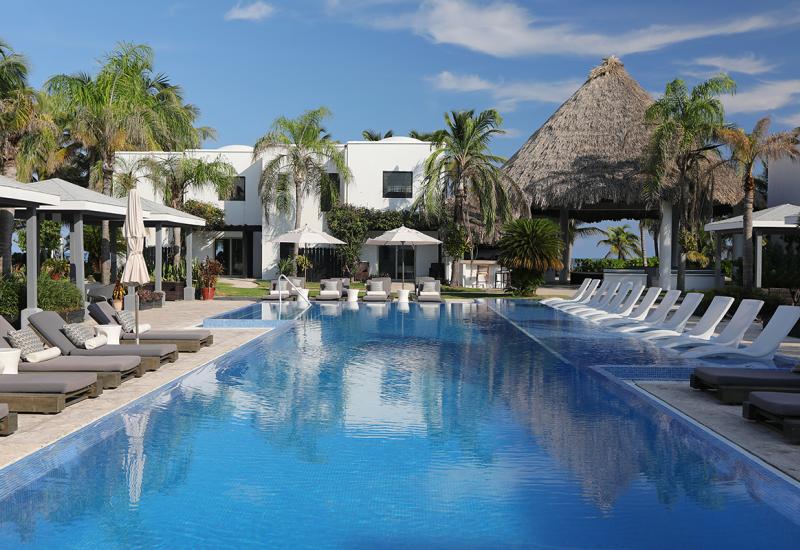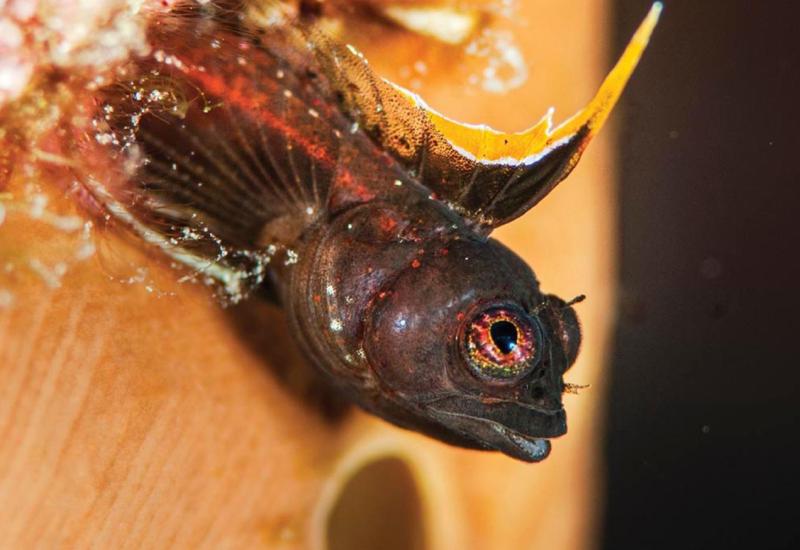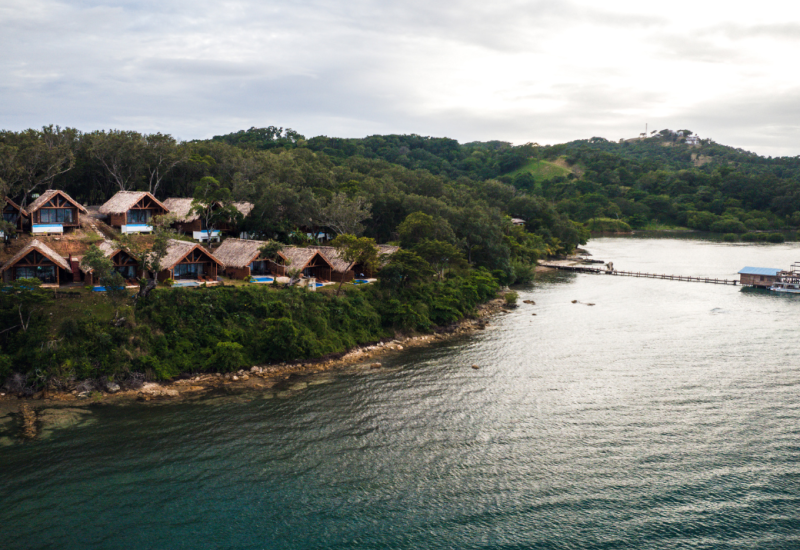The World's Best Shallow Dives

Shallow Dives Home Page Photo
Mike Ellis
You're grouchy. A few minutes ago, your buddy gave the surface signal despite the fact that you’re only 10 minutes into your dive. As a good buddy you join him in ascending, reconciled to missing out on the remaining 50 minutes of your dive.
Then something strange happens: As you move from the gray of the depths to the shallows and begin your safety stop, you forget the tirade you’d been preparing. And you’re no longer grouchy. The site is radiant with natural light. The corals are open and healthy, the fish active. Then it hits you: This is so much better than it was down deep.
Admit it, this has happened to you before: surfacing to a beautiful, shallow reef, but with only enough air for a three-minute safety stop, you spend your time regretting not coming up sooner.
There’s a solution. What if you spent your entire dive in the shallows? Sites like Dicky’s Place in Papua New Guinea (10 feet) or Two Steps in Hawaii (20 feet) — along with 18 others — offer hours of diving pleasure at safety-stop depths.
Dicky’s Place
Garove, Papua New Guinea
Protected from the brunt of ocean currents by the horseshoe-shaped remains of a volcanic caldera, the sloping profile of this shallow, isolated bay provides varied habitats for an array of critters. And while you might be tempted to have a glass of wine and just stay topside listening to expat Dicky Doyle’s colorful tales of life in PNG, this small site merits multiple tanks.
The deeper waters are bountiful enough, but several dives can be spent just in the warm, clear shallows — particularly the few feet of water bordering a field of sea grass. There you can spend a whole dive puttering around searching out hidden treasures.
In addition to the more obvious shrimpfish that bob up and down among the grasses, you’ll find a bounty of pipefish, ghost pipefish, seahorses, razorfish, anemonefish, eels and crazy crustaceans of great variety, to name just a few.
If given the chance, dive Dicky’s Place once in the day and then again at night. Then go have that glass of wine.
Make It Happen Dicky’s Place, on Garove island, is accessible only by live-aboard. MV FeBrina (walindi.com), out of Walindi Resort, includes the Witu islands and Dicky’s on its signature itineraries, visiting that region April through June and September through November. A nine-night signature itinerary is $3,795.
Los Islotes
Sea of Cortez, Mexico
It’s best to accept you’re no longer in charge before you make that first giant stride at this marine-mammal rookery. As long as you’re cool with that, all that’s left is to hang out and enjoy the show.
At Los Islotes, a colony of friendly and curious sea lions include visitors in an impromptu ballet performance often involving extreme audience interaction. Fins, hoods and danglies are all fair game for fun-loving sea lions that spin, somersault and playfully attack in the shallow waters at the island’s edge. Pups in particular enjoy engaging neoprene-clad voyeurs, though the adults often join in the fun. Try not to be too surprised if a half-ton beachmaster sneaks up behind you and lets out a deafening bark just inches from your head. Divemasters will tell you that’s a sign you’ve ventured too close to their topside harem, but it’s often a temptation that’s impossible to resist.
Make It Happen Los Islotes is currently visited as part of an extended Baja Nature itinerary by the Solmar V (solmarv.com). The eight-day trip, offered in late June, is priced at $1,795 for a standard room.
The Passage
Raja Ampat, Indonesia
Known by many names including, simply, “The Passage,” this site is a Raja Ampat legend. Limestone cliffs and jungle canopies loom above a fjord that splits two islands but, at a width of only 80 feet, feels more like a river than a sea passage.
Mangrove roots plunge beneath the surface where they meet with vibrant coral growth. Sea fans, sponges and soft corals reach almost to the surface. Hidden tunnels and grottoes await the adventurous diver. And while all the elements combine to create a surreal scene, if you time your dive correctly, you’ll get an added bonus as the seascape is lit by intense shafts of light squeezing through the congestion above.
Drifting along, you’ll always be within spitting distance of the surface. But the only spitting will be the archerfish picking off their prey on the brances above. Yet just a few feet lower, the sponges and corals erupt in colorful reef displays.
Chronicled by many, and detailed by David Doubilet in National Geographic in 2007, this is a true bucket-list dive.
Make It Happen Arenui the Boutique Live-aboard (thearenui.com) runs trips to Raja Ampat. An 11-night trip starts from $5,060; a 13-night trip starts from $5,980.
Two Steps
Kona Coast, Hawaii, USA
One step, two steps … you’re in. Kona’s stair-step entry guides divers immediately into the rutted undersea lavascape at famous Honaunau Bay, home to some of Hawaii’s most extensive shallow-water coral reefs.
Meandering among the fingers of lava that flow down-slope, you’ll be treated to a unique seascape rich in life and surprises. With walls on both sides, these coral “hallways” twist about, with chance encounters at every turn. The protected, sunlit canyons feature healthy coral growth and a veritable aquarium of Hawaiian reef fish. Keep an eye out, even in the shallows, for turtles, octopuses and eels.
Once you hit the “beach,” the sun-heated lava will take away any chill. Two Steps is next to the Place of Refuge, historically a site where lawbreakers sought sanctuary; today the sanctuary seekers are likely packing picnic lunches, coolers and snorkeling gear.
Make It Happen Jack’s Diving Locker (jacksdivinglocker.com) can give you a map (for a self-guided dive) or include it as part of a multiple-dive boat trip. If free parking isn’t available, pay to park at the adjacent Pu’uhonua o Honaunau National Historical Park.
Blue Heron Bridge
Florida, USA
There’s no need to go deep, and there’s no need to go far to find a bevy of unique and intriguing creatures at this fantastic U.S. site.
Riviera Beach, just north of the West Palm Beach airport, is home to one of Florida’s diving treasures, Blue Heron Bridge. Called “the Lembeh Strait of Florida” by its legions of fans, this site provides a wealth of critters seldom seen in U.S. waters. With crowd-pleasers like striated frogfish, stargazers, yellow garden eels, long-armed octopuses and sea robins, it’s no surprise Blue Heron has garnered rave reviews from critter experts Ned and Anna DeLoach and photo pro Alex Mustard.
Maxing out at just over 20 feet during high tide, this site is divable only during slack tide. (Locals advise being geared up about 30 minutes before high tide.) Timed correctly, you can get in 90 to 120 minutes of diving, depending upon conditions and your air consumption (which, at these depths, is likely not an issue).
Make It Happen Phil Foster Park provides parking and a convenient entry point for day diving, so call up your buddy and head over (after checking tide tables). Visibility and conditions are variable, as is water temperature. Boat diving is available without time restrictions, but the park is closed to night diving. Check out Jupiter Dive Center (jupiterdivecenter.com/) to explore the bridge as well as coral reefs, ridges, and wrecks in area.
Cuarenta Canones (40 Cannons)
Chinchorro Banks, Mexico
This site 150 miles south of Cozumel isn’t your average wreck dive. In fact, there’s no discernible vessel, just a scattered set of 300-year-old cannons, reduced from 40 to 24 as a result of salvaging and piracy.
But what an amazing set of cannons it is. Though encrusted with growth, many of the cannons’ details remain clear, including knobs on the breeches of several. And at depths of 12 to 15 feet, with a sandy bottom and visibility that normally ranges from 60 to 200 feet, mild currents and balmy water temperatures, you can explore to your heart’s content.
Once you’ve had your fill of 40 Cannons, set sail for other sites in the area — reportedly the western hemisphere’s largest coral-ringed lagoon, Mexico’s Chinchorro Banks Federal Biosphere Reserve contains between 30 and 200 wrecks, many quite shallow as well.
Make it Happen Dreamtime Dive Resort (dreamtimediving.com) in Mahahual, Costa Maya, offers a full-day charter (two- and three-tank trips) to Chinchorro Banks. Optimal diving conditions are June through August.
Chandelier Cave
Koror, Palau
Minutes from the dock, this iconic dive is your chance to view Palau’s famous limestone from the inside. Though technically a cave, operators routinely bring open-water divers to what is considered an intermediate site.
The easy-to-access first chamber, partially illuminated by sunlight from outside the entrance, provides an introduction. A halocline, caused by the mixing of salt and fresh water, produces an eerie underwater effect complemented by the ethereal dancing of light on the ceiling as divers surface into the cavernous air pocket.
Popping from one chamber to the next, divers progress deeper into the cave system to experience the Zen-like tranquility of waters completely cut off from current or sunlight, and filled with beautiful stalactites and stalagmites. As you enter the successively darker chambers, your light may very well illuminate a dozen or more legs as your buddies float on the surface inside the large air pockets that top off each of the four.
Make It Happen Sam’s Tours (samstours.com) offers Chandelier Caves as the third dive of the day for $40 extra. Chandelier Caves is a minute from the Fish ‘n Fins dock (fishnfins.com), and is also offered as the third dive — on top of a two-tank day — for $35.
Mirror Pond
Mane Island, Solomon Islands
The dive begins at a shallow entrance home to a variety of hard and soft corals bursting with scores of reef denizens from cuttlefish to bumphead parrotfish to pygmy seahorses. Topping off a dramatic wall, the sun-washed spurs and grooves ripple with light, and temperatures stay comfortably in the 80s.
The most traveled passageway leads divers through shallow hard-coral heads alive with critters. On one head alone, a large colony of Paguritta coral crabs has taken over former wormholes. If you listened to the briefing you probably left the macro lens on the boat and won’t be able to shoot these little critters — the star of this show has teeth larger than the biggest of these miniature crabs.
A slight descent through a shallow tunnel leads to an inner lagoon whose reflective qualities inspired the site’s name. The jungle overhangs the lagoon, adding to its otherworldly nature. Often seen floating on the surface, or lazing on an underwater shelf, is the resident saltwater crocodile. (You may wish to go before the croc reaches maturity.)
Make It Happen Bilikiki Cruises (bilikiki.com), with both the Bilikiki and Spirit of the Solomons, regularly visits Mirror Pond. Cruises begin at $2,849 for a seven-day itinerary.
CoCo View Resort House Reef
Roatan, Honduras
Watch the other divers as they head out. A path through the sea grass leads to a chain that guides divers into the depths of the CoCo View house reef, affectionately known as the “front yard.” You can follow the chain, but if you choose the path less traveled, staying parallel to shore once you spot the chain, you’ll find the rewards are plentiful.
The front yard is a riot of damselfish and cleaning stations, with a bounty of reef fish, including parrotfish and sergeant majors. In the sand, you’ll sometimes find rays and flounders, seahorses, blennies and little eels; the shallows are well covered in turtle grass, which provides safe haven for jawfish. And don’t be surprised to find an octopus or two patrolling the sand.
Once you’ve done it, do it again: Grab a tank and treat yourself to a night dive, because the front yard is just as lively when the sun goes down.
Make It Happen CoCo View’s (cocoviewresort.com) high-season rate (January through June) for a seven-night stay in an oceanfront room runs $1,349, which includes meals and four boat dives a day. Unlimited shore diving is included in the package.
Tiger Beach
Grand Bahama Island
The rippled white-sand bottom of Tiger Beach provides a dramatic stage for one of the premier shark dives in the world. With a hard bottom of 20 feet, crystal-clear waters and 340 sunny days a year, you’re almost guaranteed prime viewing conditions as the vividly striped tiger sharks hit the site.
At this theater, be prepared for a lot of action as the chum and bait box lures the tigers in. The sharks are big, curious and hungry, so close encounters are common (and, need we say, exhilarating). Don’t be surprised if you get a bump or two as the sharks maneuver among you and your buddies for a bite of fish.
Action continues throughout the day, so it’s all a matter of enjoying the first two-hour dive, popping up for a water break and tank change, then heading back down again. If you don’t get the tigers, gangs of toothy, photogenic lemon sharks maraud the bait box, as well as reef sharks, shy nurse sharks and the occasional hammerhead.
Make It Happen Stuart Cove’s (stuartcoves.com) offers Tiger Beach dives year-round from Old Bahama Bay Resort (oldbahama bay.com) on Grand Bahama’s West End. An all-day excursion, including lunch and beverages, is $250 per person.
10 More Shallow Dives
Here are more sites perfect for that two-hour dive:
Tufi Resort House Reef, Papua New Guinea
Just a giant stride from the resort’s dock, the house reef combines junkyard chic with critter heaven. › Go Now Tufi Dive Resort, tufidive.com
Critter Corner, St. Vincent
If St. Vincent is the critter capital of the Caribbean, then Critter Corner may very well be the royal palace. Go slow for encounters with seahorses, plenty of pike blennies, and flying gurnards. › Go Now Dive St. Vincent, divestvincent.com
Dry Tortugas National Park, Gulf of Mexico
The shallow waters of the Dry Tortugas have lured hundreds of ships to their watery graves; now they lure divers keen on experiencing crystal-clear waters and relaxed diving. › Go Now MV Spree, spreeexpeditions.com
Caesarea, Israel
Two thousand years ago, King Herod built the city of Caesarea; today you can dive its ruins. › Go Now Caesarea Diving, caesarea-diving.com
Gran Cenote and Dos Ojos, Mexico
The shallower the better in two of Riviera Maya’s most picturesque cenotes. › Go Now Xibalba Hotel, xibalbadivecenter.com
Stingray City, Grand Cayman
With gangs of photogenic stingrays, no wonder this site is called “The World’s Best 12-Foot Dive.” › Go Now dive365cayman.com/specials
Champagne Reef, Dominica
This 15-foot site fizzes like a bottle of New Year’s Eve bubbly, caused by a venting thermal fumarole on the ocean floor. › Go Now Buddy Dive Dominica, www.buddydivedominica.com
Edithburgh Jetty, Australia
Colorfully adorned with sponges and gorgonians, this site features a wealth of critters from seahorses to cuttlefish. › Go Now Adelaide Scuba, adelaidescuba.com.au
Endymion Reef, Turks and Caicos
The structure of the 220-year-old HMS Endymion is long gone, but cannons, ballast stones and a trio of 12-foot anchors remain. › Go Now Salt Cay Divers, saltcaydivers.tc
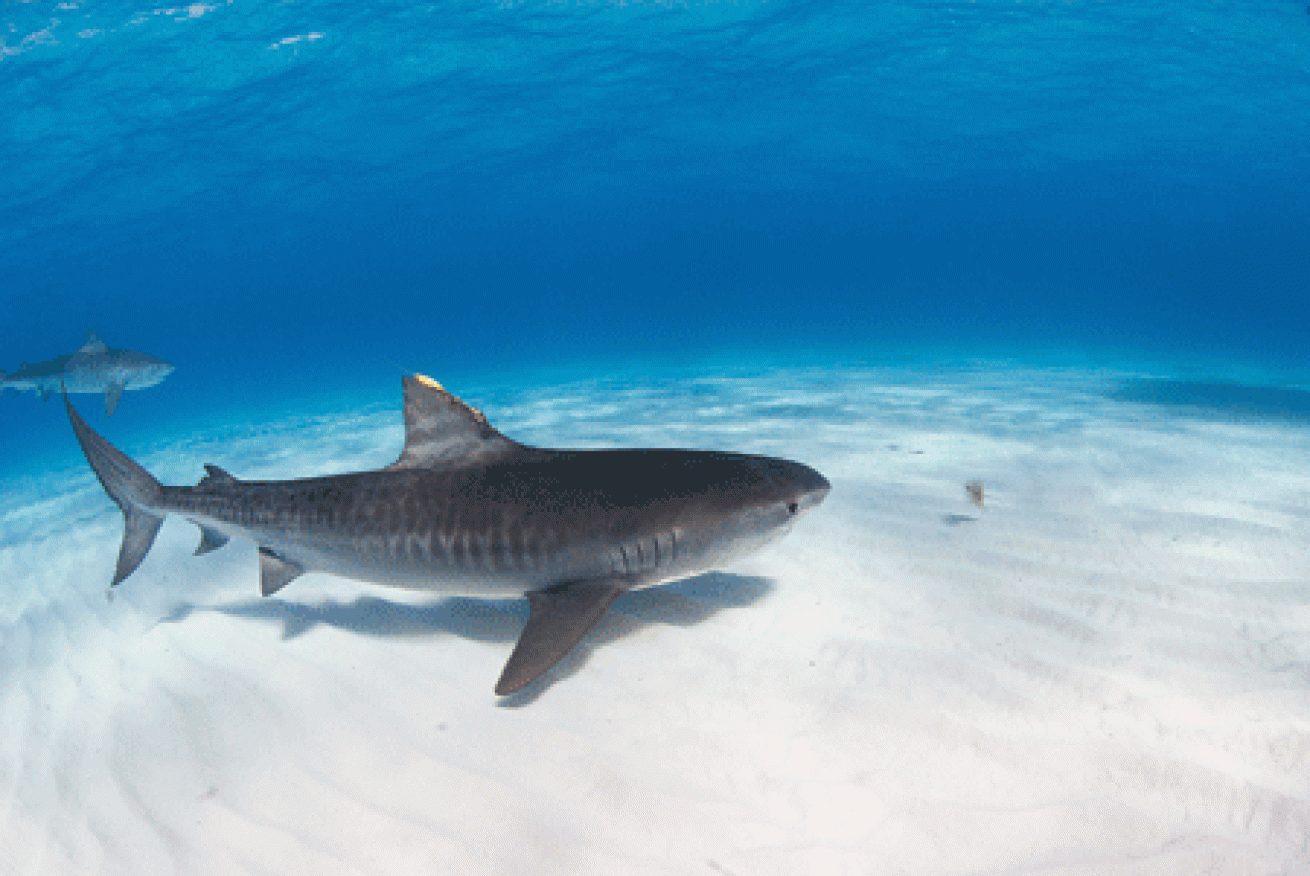
Al Hornsby
You're grouchy. A few minutes ago, your buddy gave the surface signal despite the fact that you’re only 10 minutes into your dive. As a good buddy you join him in ascending, reconciled to missing out on the remaining 50 minutes of your dive.
Then something strange happens: As you move from the gray of the depths to the shallows and begin your safety stop, you forget the tirade you’d been preparing. And you’re no longer grouchy. The site is radiant with natural light. The corals are open and healthy, the fish active. Then it hits you: This is so much better than it was down deep.
Admit it, this has happened to you before: surfacing to a beautiful, shallow reef, but with only enough air for a three-minute safety stop, you spend your time regretting not coming up sooner.
There’s a solution. What if you spent your entire dive in the shallows? Sites like Dicky’s Place in Papua New Guinea (10 feet) or Two Steps in Hawaii (20 feet) — along with 18 others — offer hours of diving pleasure at safety-stop depths.
Dicky’s Place
Garove, Papua New Guinea
Protected from the brunt of ocean currents by the horseshoe-shaped remains of a volcanic caldera, the sloping profile of this shallow, isolated bay provides varied habitats for an array of critters. And while you might be tempted to have a glass of wine and just stay topside listening to expat Dicky Doyle’s colorful tales of life in PNG, this small site merits multiple tanks.
The deeper waters are bountiful enough, but several dives can be spent just in the warm, clear shallows — particularly the few feet of water bordering a field of sea grass. There you can spend a whole dive puttering around searching out hidden treasures.
In addition to the more obvious shrimpfish that bob up and down among the grasses, you’ll find a bounty of pipefish, ghost pipefish, seahorses, razorfish, anemonefish, eels and crazy crustaceans of great variety, to name just a few.
If given the chance, dive Dicky’s Place once in the day and then again at night. Then go have that glass of wine.
Make It Happen Dicky’s Place, on Garove island, is accessible only by live-aboard. MV FeBrina (walindi.com), out of Walindi Resort, includes the Witu islands and Dicky’s on its signature itineraries, visiting that region April through June and September through November. A nine-night signature itinerary is $3,795.
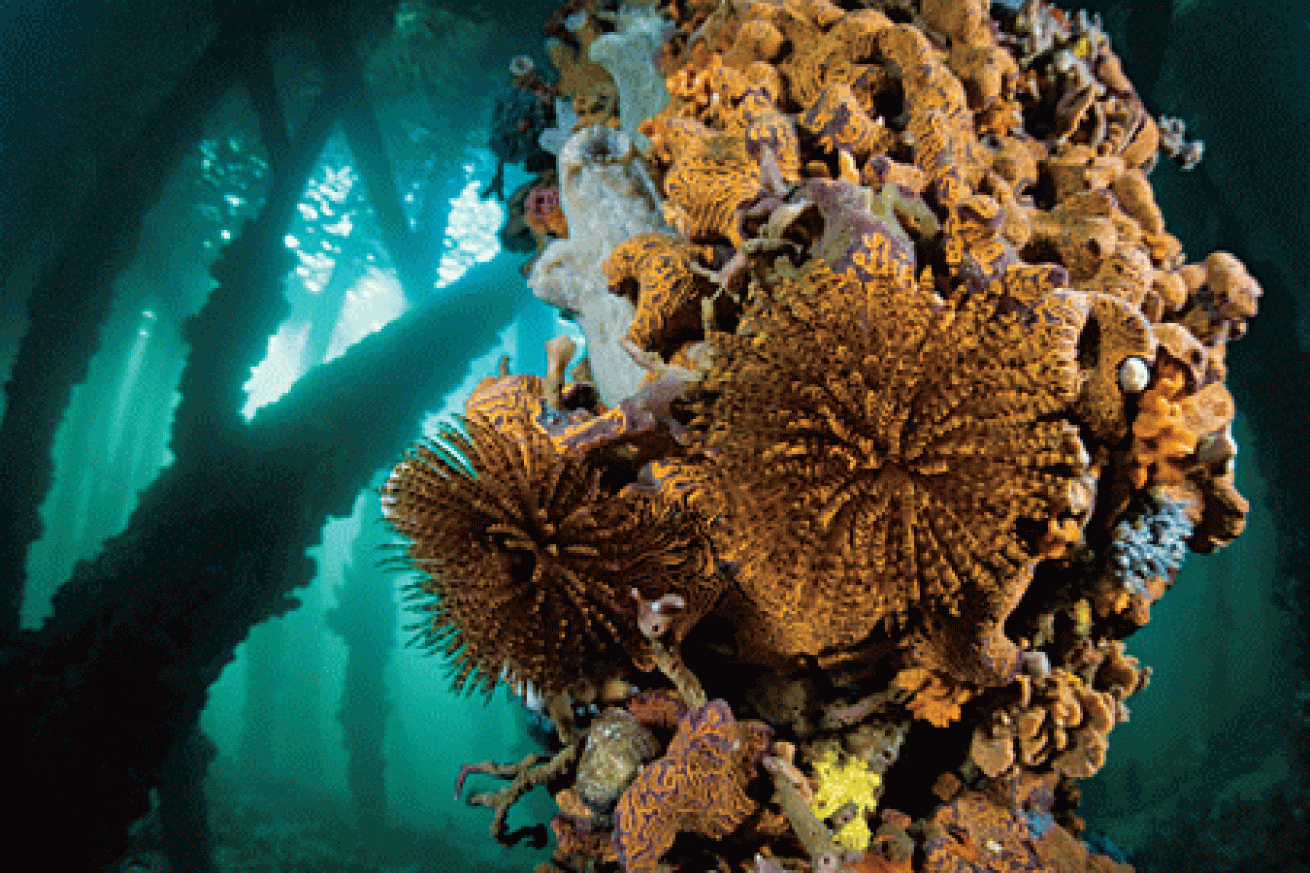
Fred Bavendam
Los Islotes
Sea of Cortez, Mexico
It’s best to accept you’re no longer in charge before you make that first giant stride at this marine-mammal rookery. As long as you’re cool with that, all that’s left is to hang out and enjoy the show.
At Los Islotes, a colony of friendly and curious sea lions include visitors in an impromptu ballet performance often involving extreme audience interaction. Fins, hoods and danglies are all fair game for fun-loving sea lions that spin, somersault and playfully attack in the shallow waters at the island’s edge. Pups in particular enjoy engaging neoprene-clad voyeurs, though the adults often join in the fun. Try not to be too surprised if a half-ton beachmaster sneaks up behind you and lets out a deafening bark just inches from your head. Divemasters will tell you that’s a sign you’ve ventured too close to their topside harem, but it’s often a temptation that’s impossible to resist.
Make It Happen Los Islotes is currently visited as part of an extended Baja Nature itinerary by the Solmar V (solmarv.com). The eight-day trip, offered in late June, is priced at $1,795 for a standard room.
The Passage
Raja Ampat, Indonesia
Known by many names including, simply, “The Passage,” this site is a Raja Ampat legend. Limestone cliffs and jungle canopies loom above a fjord that splits two islands but, at a width of only 80 feet, feels more like a river than a sea passage.
Mangrove roots plunge beneath the surface where they meet with vibrant coral growth. Sea fans, sponges and soft corals reach almost to the surface. Hidden tunnels and grottoes await the adventurous diver. And while all the elements combine to create a surreal scene, if you time your dive correctly, you’ll get an added bonus as the seascape is lit by intense shafts of light squeezing through the congestion above.
Drifting along, you’ll always be within spitting distance of the surface. But the only spitting will be the archerfish picking off their prey on the brances above. Yet just a few feet lower, the sponges and corals erupt in colorful reef displays.
Chronicled by many, and detailed by David Doubilet in National Geographic in 2007, this is a true bucket-list dive.
Make It Happen Arenui the Boutique Live-aboard (thearenui.com) runs trips to Raja Ampat. An 11-night trip starts from $5,060; a 13-night trip starts from $5,980.
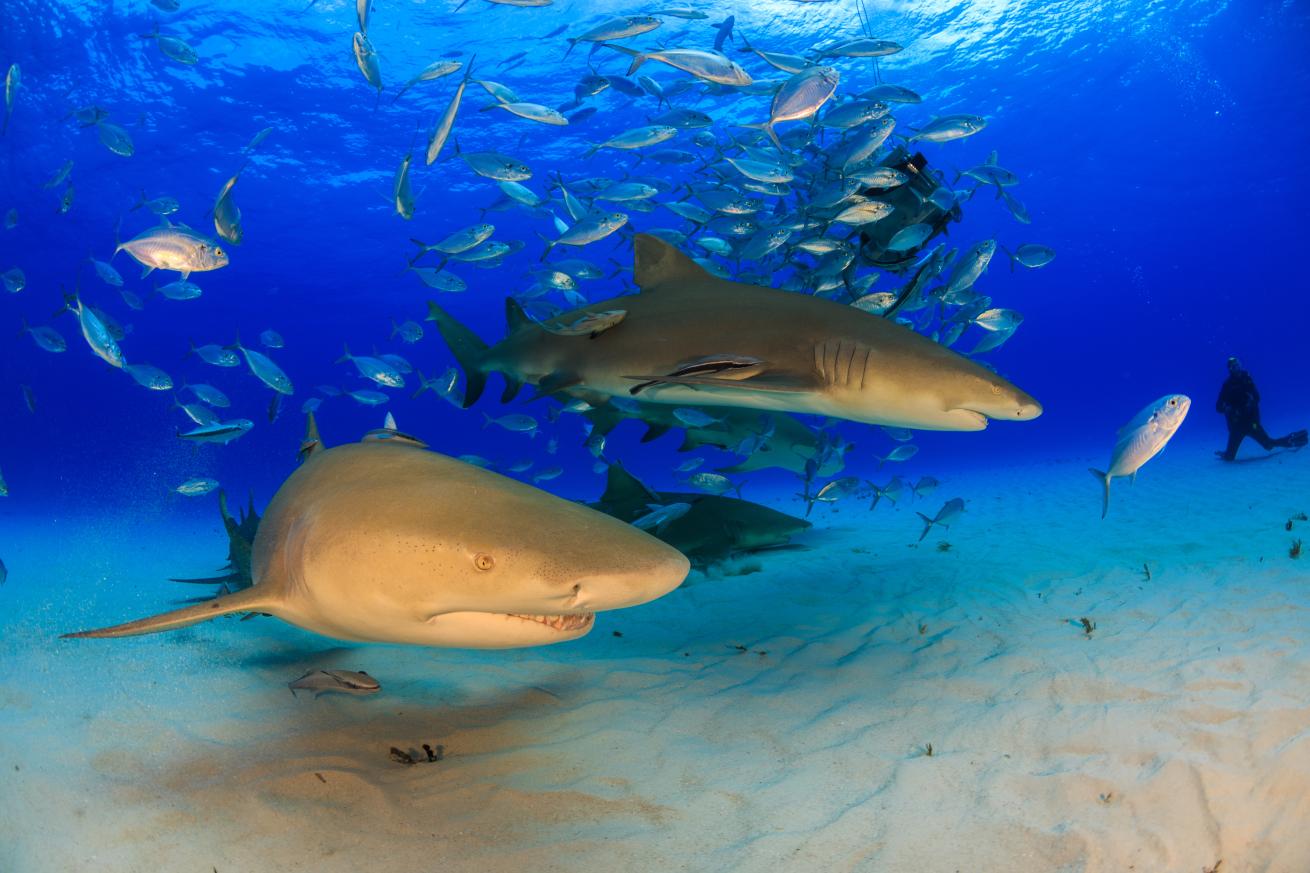
ShutterstockLemon Sharks
Two Steps
Kona Coast, Hawaii, USA
One step, two steps … you’re in. Kona’s stair-step entry guides divers immediately into the rutted undersea lavascape at famous Honaunau Bay, home to some of Hawaii’s most extensive shallow-water coral reefs.
Meandering among the fingers of lava that flow down-slope, you’ll be treated to a unique seascape rich in life and surprises. With walls on both sides, these coral “hallways” twist about, with chance encounters at every turn. The protected, sunlit canyons feature healthy coral growth and a veritable aquarium of Hawaiian reef fish. Keep an eye out, even in the shallows, for turtles, octopuses and eels.
Once you hit the “beach,” the sun-heated lava will take away any chill. Two Steps is next to the Place of Refuge, historically a site where lawbreakers sought sanctuary; today the sanctuary seekers are likely packing picnic lunches, coolers and snorkeling gear.
Make It Happen Jack’s Diving Locker (jacksdivinglocker.com) can give you a map (for a self-guided dive) or include it as part of a multiple-dive boat trip. If free parking isn’t available, pay to park at the adjacent Pu’uhonua o Honaunau National Historical Park.
Blue Heron Bridge
Florida, USA
There’s no need to go deep, and there’s no need to go far to find a bevy of unique and intriguing creatures at this fantastic U.S. site.
Riviera Beach, just north of the West Palm Beach airport, is home to one of Florida’s diving treasures, Blue Heron Bridge. Called “the Lembeh Strait of Florida” by its legions of fans, this site provides a wealth of critters seldom seen in U.S. waters. With crowd-pleasers like striated frogfish, stargazers, yellow garden eels, long-armed octopuses and sea robins, it’s no surprise Blue Heron has garnered rave reviews from critter experts Ned and Anna DeLoach and photo pro Alex Mustard.
Maxing out at just over 20 feet during high tide, this site is divable only during slack tide. (Locals advise being geared up about 30 minutes before high tide.) Timed correctly, you can get in 90 to 120 minutes of diving, depending upon conditions and your air consumption (which, at these depths, is likely not an issue).
Make It Happen Phil Foster Park provides parking and a convenient entry point for day diving, so call up your buddy and head over (after checking tide tables). Visibility and conditions are variable, as is water temperature. Boat diving is available without time restrictions, but the park is closed to night diving. Check out Jupiter Dive Center (jupiterdivecenter.com/) to explore the bridge as well as coral reefs, ridges, and wrecks in area.
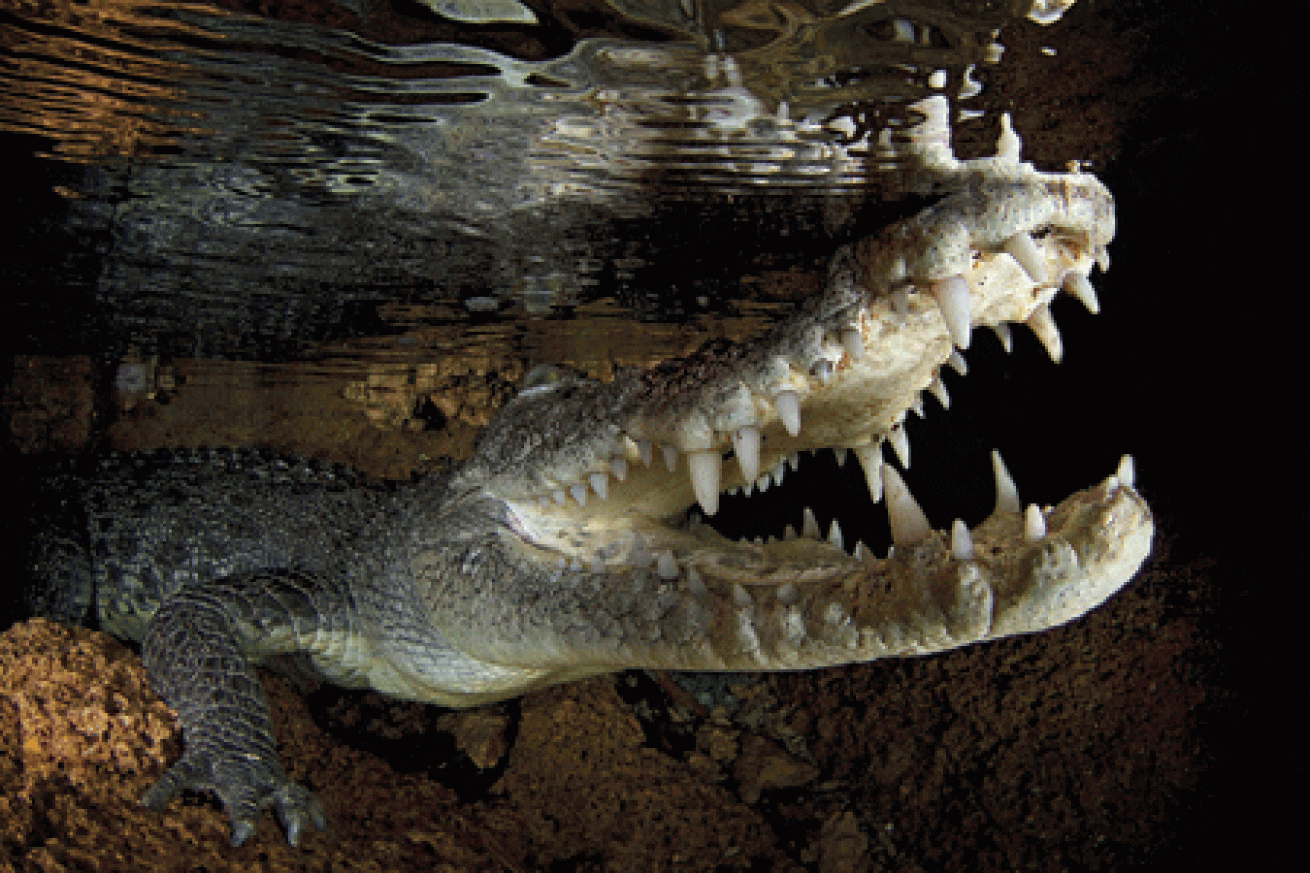
Keri Wilk
Cuarenta Canones (40 Cannons)
Chinchorro Banks, Mexico
This site 150 miles south of Cozumel isn’t your average wreck dive. In fact, there’s no discernible vessel, just a scattered set of 300-year-old cannons, reduced from 40 to 24 as a result of salvaging and piracy.
But what an amazing set of cannons it is. Though encrusted with growth, many of the cannons’ details remain clear, including knobs on the breeches of several. And at depths of 12 to 15 feet, with a sandy bottom and visibility that normally ranges from 60 to 200 feet, mild currents and balmy water temperatures, you can explore to your heart’s content.
Once you’ve had your fill of 40 Cannons, set sail for other sites in the area — reportedly the western hemisphere’s largest coral-ringed lagoon, Mexico’s Chinchorro Banks Federal Biosphere Reserve contains between 30 and 200 wrecks, many quite shallow as well.
Make it Happen Dreamtime Dive Resort (dreamtimediving.com) in Mahahual, Costa Maya, offers a full-day charter (two- and three-tank trips) to Chinchorro Banks. Optimal diving conditions are June through August.
Chandelier Cave
Koror, Palau
Minutes from the dock, this iconic dive is your chance to view Palau’s famous limestone from the inside. Though technically a cave, operators routinely bring open-water divers to what is considered an intermediate site.
The easy-to-access first chamber, partially illuminated by sunlight from outside the entrance, provides an introduction. A halocline, caused by the mixing of salt and fresh water, produces an eerie underwater effect complemented by the ethereal dancing of light on the ceiling as divers surface into the cavernous air pocket.
Popping from one chamber to the next, divers progress deeper into the cave system to experience the Zen-like tranquility of waters completely cut off from current or sunlight, and filled with beautiful stalactites and stalagmites. As you enter the successively darker chambers, your light may very well illuminate a dozen or more legs as your buddies float on the surface inside the large air pockets that top off each of the four.
Make It Happen Sam’s Tours (samstours.com) offers Chandelier Caves as the third dive of the day for $40 extra. Chandelier Caves is a minute from the Fish ‘n Fins dock (fishnfins.com), and is also offered as the third dive — on top of a two-tank day — for $35.
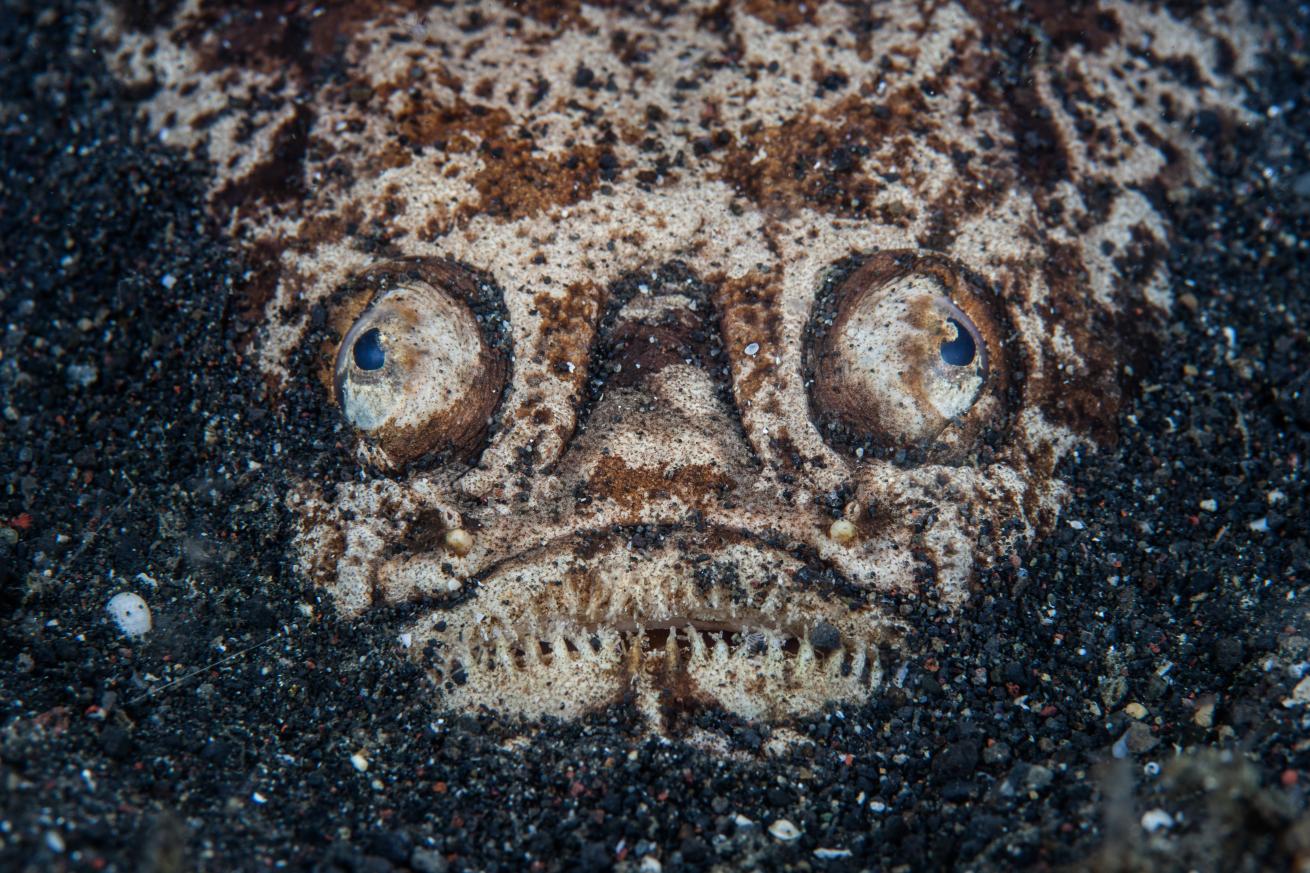
ShutterstockStargazer
Mirror Pond
Mane Island, Solomon Islands
The dive begins at a shallow entrance home to a variety of hard and soft corals bursting with scores of reef denizens from cuttlefish to bumphead parrotfish to pygmy seahorses. Topping off a dramatic wall, the sun-washed spurs and grooves ripple with light, and temperatures stay comfortably in the 80s.
The most traveled passageway leads divers through shallow hard-coral heads alive with critters. On one head alone, a large colony of Paguritta coral crabs has taken over former wormholes. If you listened to the briefing you probably left the macro lens on the boat and won’t be able to shoot these little critters — the star of this show has teeth larger than the biggest of these miniature crabs.
A slight descent through a shallow tunnel leads to an inner lagoon whose reflective qualities inspired the site’s name. The jungle overhangs the lagoon, adding to its otherworldly nature. Often seen floating on the surface, or lazing on an underwater shelf, is the resident saltwater crocodile. (You may wish to go before the croc reaches maturity.)
Make It Happen Bilikiki Cruises (bilikiki.com), with both the Bilikiki and Spirit of the Solomons, regularly visits Mirror Pond. Cruises begin at $2,849 for a seven-day itinerary.
CoCo View Resort House Reef
Roatan, Honduras
Watch the other divers as they head out. A path through the sea grass leads to a chain that guides divers into the depths of the CoCo View house reef, affectionately known as the “front yard.” You can follow the chain, but if you choose the path less traveled, staying parallel to shore once you spot the chain, you’ll find the rewards are plentiful.
The front yard is a riot of damselfish and cleaning stations, with a bounty of reef fish, including parrotfish and sergeant majors. In the sand, you’ll sometimes find rays and flounders, seahorses, blennies and little eels; the shallows are well covered in turtle grass, which provides safe haven for jawfish. And don’t be surprised to find an octopus or two patrolling the sand.
Once you’ve done it, do it again: Grab a tank and treat yourself to a night dive, because the front yard is just as lively when the sun goes down.
Make It Happen CoCo View’s (cocoviewresort.com) high-season rate (January through June) for a seven-night stay in an oceanfront room runs $1,349, which includes meals and four boat dives a day. Unlimited shore diving is included in the package.
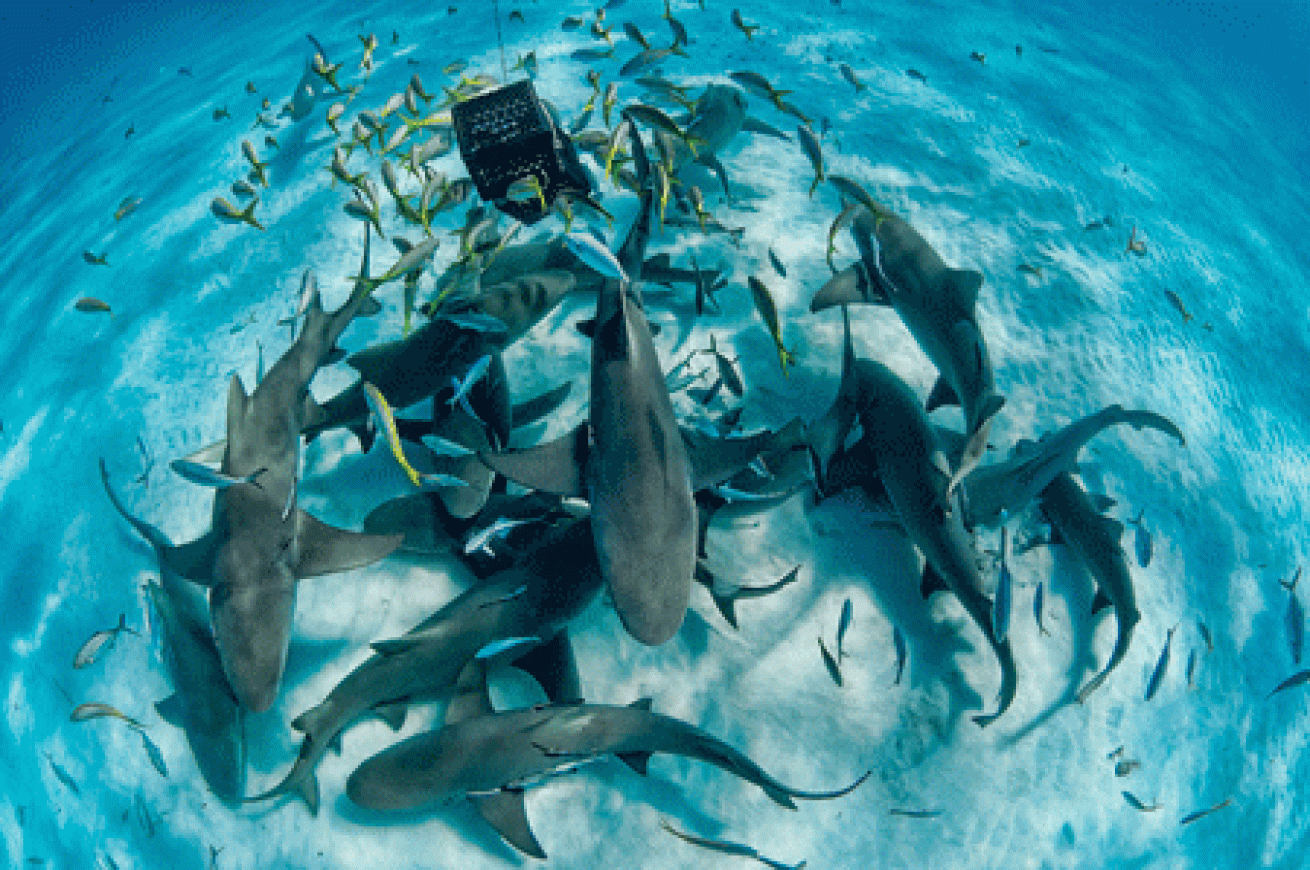
Mike Ellis
Tiger Beach
Grand Bahama Island
The rippled white-sand bottom of Tiger Beach provides a dramatic stage for one of the premier shark dives in the world. With a hard bottom of 20 feet, crystal-clear waters and 340 sunny days a year, you’re almost guaranteed prime viewing conditions as the vividly striped tiger sharks hit the site.
At this theater, be prepared for a lot of action as the chum and bait box lures the tigers in. The sharks are big, curious and hungry, so close encounters are common (and, need we say, exhilarating). Don’t be surprised if you get a bump or two as the sharks maneuver among you and your buddies for a bite of fish.
Action continues throughout the day, so it’s all a matter of enjoying the first two-hour dive, popping up for a water break and tank change, then heading back down again. If you don’t get the tigers, gangs of toothy, photogenic lemon sharks maraud the bait box, as well as reef sharks, shy nurse sharks and the occasional hammerhead.
Make It Happen Stuart Cove’s (stuartcoves.com) offers Tiger Beach dives year-round from Old Bahama Bay Resort (oldbahama bay.com) on Grand Bahama’s West End. An all-day excursion, including lunch and beverages, is $250 per person.
10 More Shallow Dives
Here are more sites perfect for that two-hour dive:
Tufi Resort House Reef, Papua New Guinea
Just a giant stride from the resort’s dock, the house reef combines junkyard chic with critter heaven. › Go Now Tufi Dive Resort, tufidive.com
Critter Corner, St. Vincent If St. Vincent is the critter capital of the Caribbean, then Critter Corner may very well be the royal palace. Go slow for encounters with seahorses, plenty of pike blennies, and flying gurnards. › Go Now Dive St. Vincent, divestvincent.com
Dry Tortugas National Park, Gulf of Mexico
The shallow waters of the Dry Tortugas have lured hundreds of ships to their watery graves; now they lure divers keen on experiencing crystal-clear waters and relaxed diving. › Go Now MV Spree, spreeexpeditions.com
Caesarea, Israel Two thousand years ago, King Herod built the city of Caesarea; today you can dive its ruins. › Go Now Caesarea Diving, caesarea-diving.com
Gran Cenote and Dos Ojos, Mexico
The shallower the better in two of Riviera Maya’s most picturesque cenotes. › Go Now Xibalba Hotel, xibalbadivecenter.com
Stingray City, Grand Cayman With gangs of photogenic stingrays, no wonder this site is called “The World’s Best 12-Foot Dive.” › Go Now dive365cayman.com/specials
Champagne Reef, Dominica
This 15-foot site fizzes like a bottle of New Year’s Eve bubbly, caused by a venting thermal fumarole on the ocean floor. › Go Now Buddy Dive Dominica, www.buddydivedominica.com
Edithburgh Jetty, Australia Colorfully adorned with sponges and gorgonians, this site features a wealth of critters from seahorses to cuttlefish. › Go Now Adelaide Scuba, adelaidescuba.com.au
Endymion Reef, Turks and Caicos
The structure of the 220-year-old HMS Endymion is long gone, but cannons, ballast stones and a trio of 12-foot anchors remain. › Go Now Salt Cay Divers, saltcaydivers.tc

